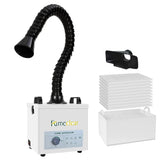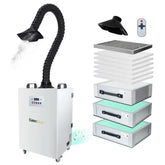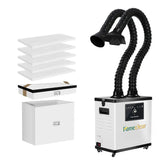+86 15013227914
support@fumeclear.com
Currency
Gemadvertorial
Fume Extractor Buying Guide: What Matters Most?

Application Type — One Size Doesn't Fit All


Airflow Capacity (CFM)



Filtration System — This Is the Core

1. Pre-filter: Captures larger dust and particles


2. HEPA filter: Traps particles as small as 0.3 microns



3. Activated Carbon filter: Absorbs odors and VOCs



Your Brand
Other Brands
- Choosing a selection results in a full page refresh.





























